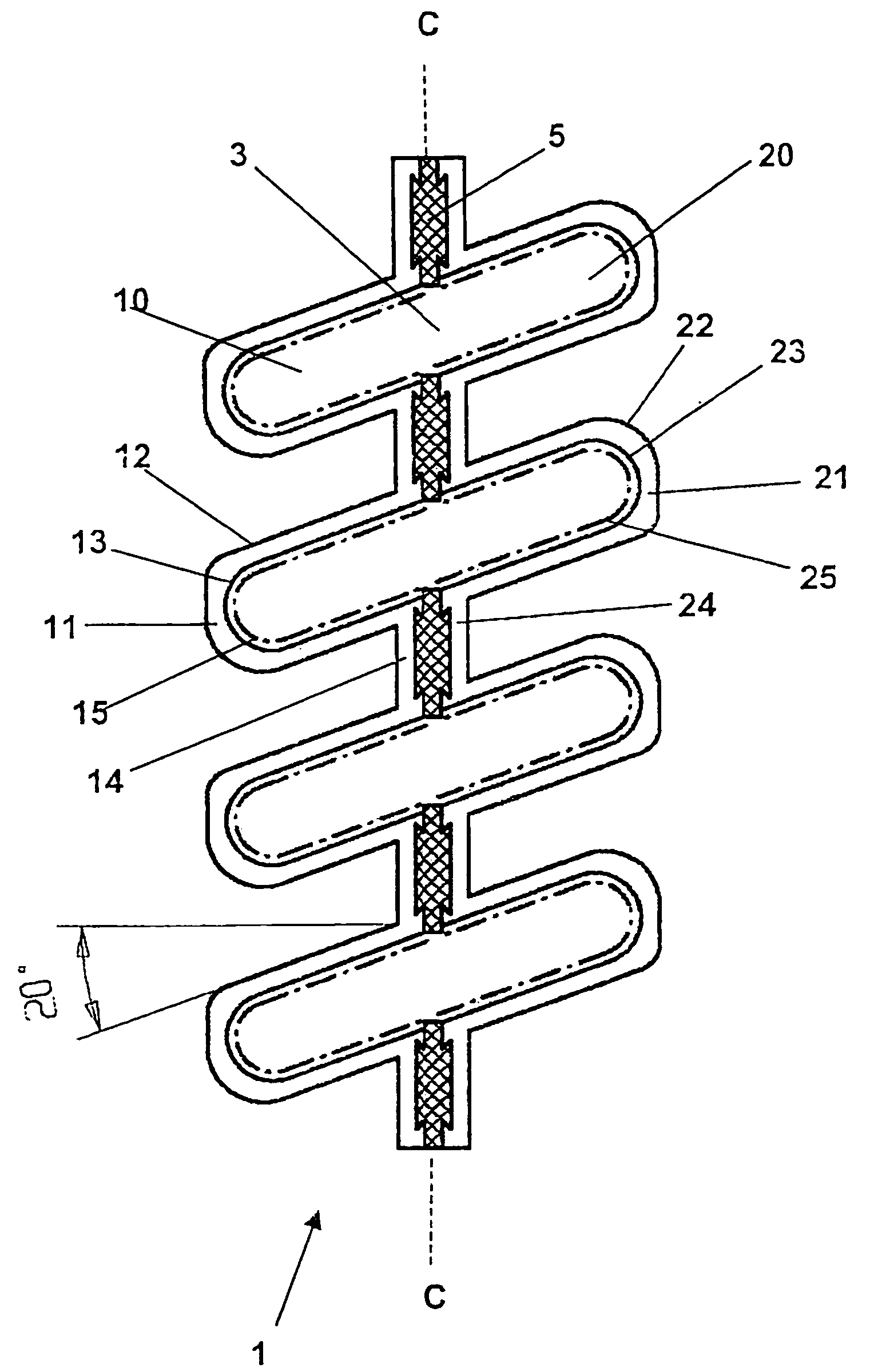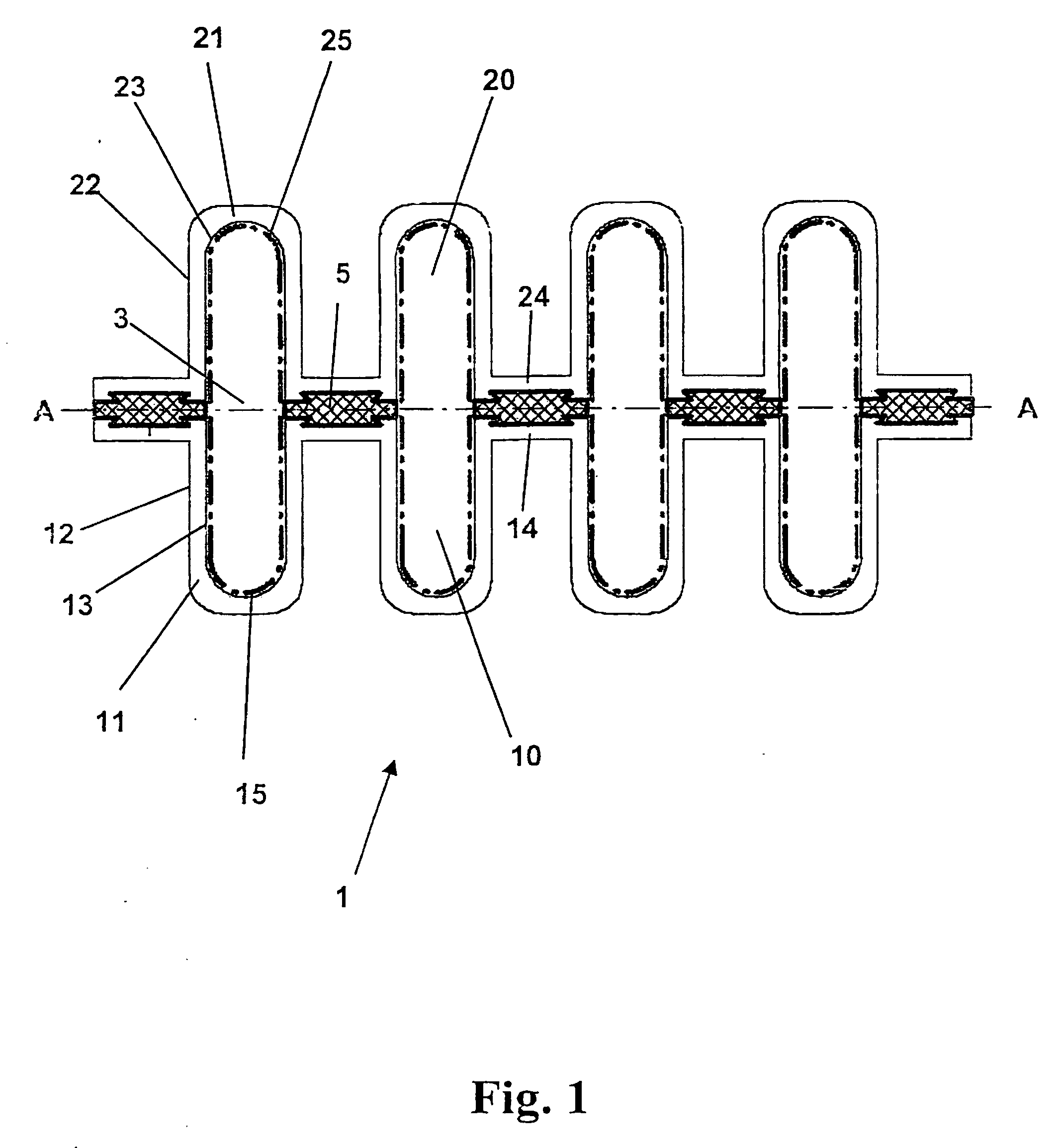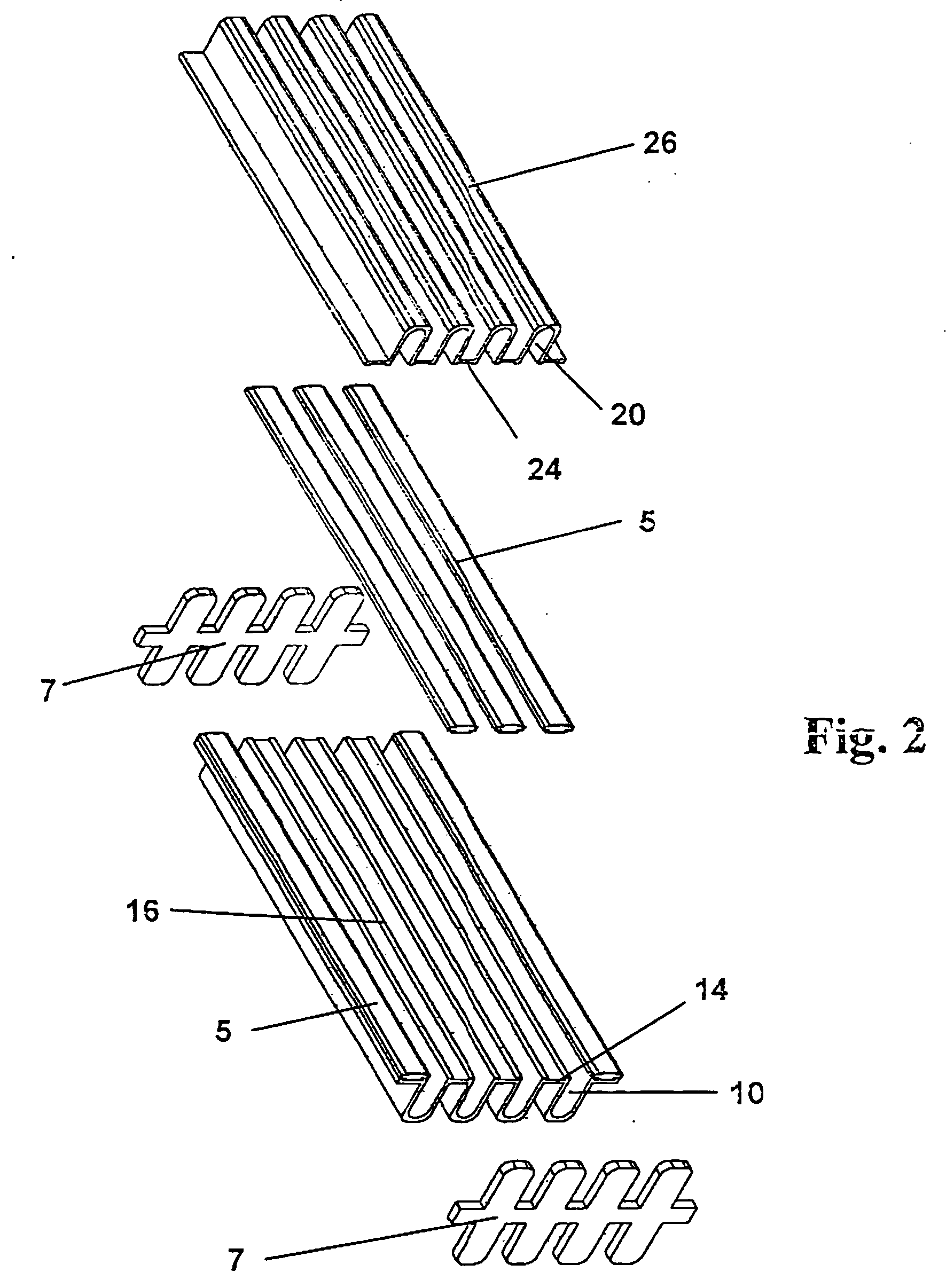Cooling device
a cooling device and cooling technology, applied in the field of cooling devices, can solve the problems of unwanted noise, damage to the unit to be cooled, and the operation of active cooling devices, and achieve the effects of facilitating even large amounts of heat, short time, and low resistance to thermal transfer of cooling devices according to the invention
- Summary
- Abstract
- Description
- Claims
- Application Information
AI Technical Summary
Benefits of technology
Problems solved by technology
Method used
Image
Examples
Embodiment Construction
[0021]FIG. 1 shows a first preferred embodiment of this invention, wherein the cooling device 1 is illustrated in cross-section and there is symmetry with regard to the plane defined by A-A. In the lower half the cooling device 1 comprises four evaporation chambers 10 which are confined by the boundary walls 11 which are joined together in each case byjoining webs 14. The outer surfaces 12 of the evaporation chambers 10 are in thermal contact with the unit to be cooled (not shown). On the inner surfaces 13 of the evaporation chambers 10 a fleece 15 is arranged which is soaked with a liquid, such as for example distilled water or alcohol.
[0022] In the upper half the cooling device 1 comprises four condensation chambers 20 which are confined by the boundary walls 21 which are in turn joined together in each case by connecting webs 24. The outer surfaces 22 of the condensation chambers 20 are suitable for dissipating heat into their surroundings. On the inner surfaces 23 of the conden...
PUM
| Property | Measurement | Unit |
|---|---|---|
| thermally conductive | aaaaa | aaaaa |
| thermal dissipation | aaaaa | aaaaa |
| resistance | aaaaa | aaaaa |
Abstract
Description
Claims
Application Information
 Login to View More
Login to View More - R&D
- Intellectual Property
- Life Sciences
- Materials
- Tech Scout
- Unparalleled Data Quality
- Higher Quality Content
- 60% Fewer Hallucinations
Browse by: Latest US Patents, China's latest patents, Technical Efficacy Thesaurus, Application Domain, Technology Topic, Popular Technical Reports.
© 2025 PatSnap. All rights reserved.Legal|Privacy policy|Modern Slavery Act Transparency Statement|Sitemap|About US| Contact US: help@patsnap.com



